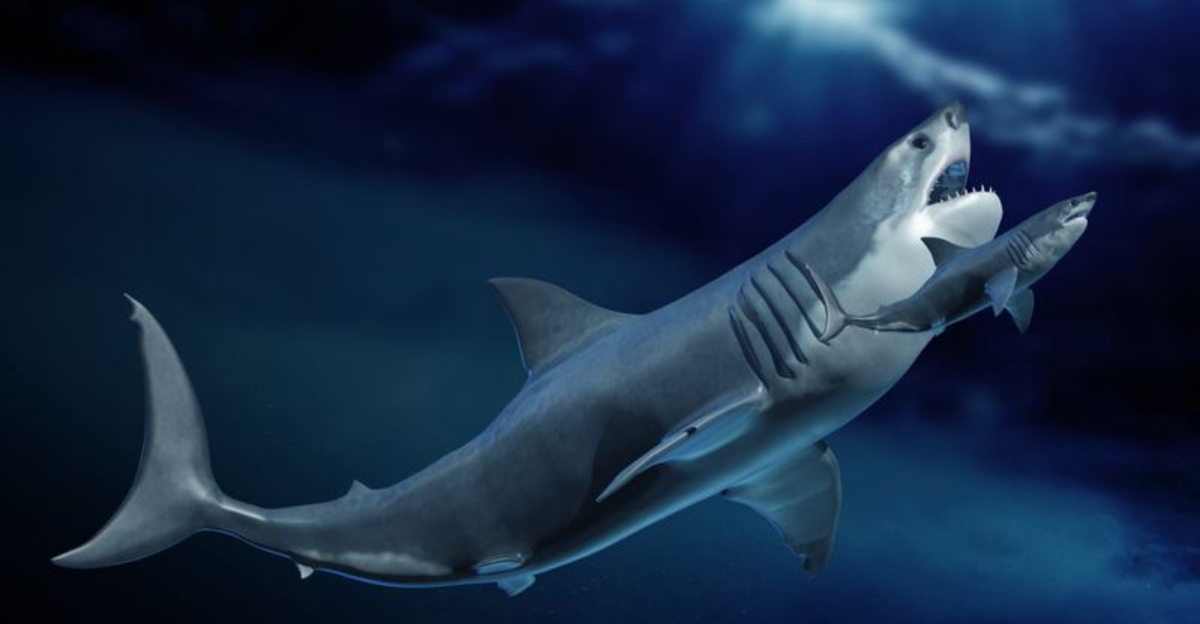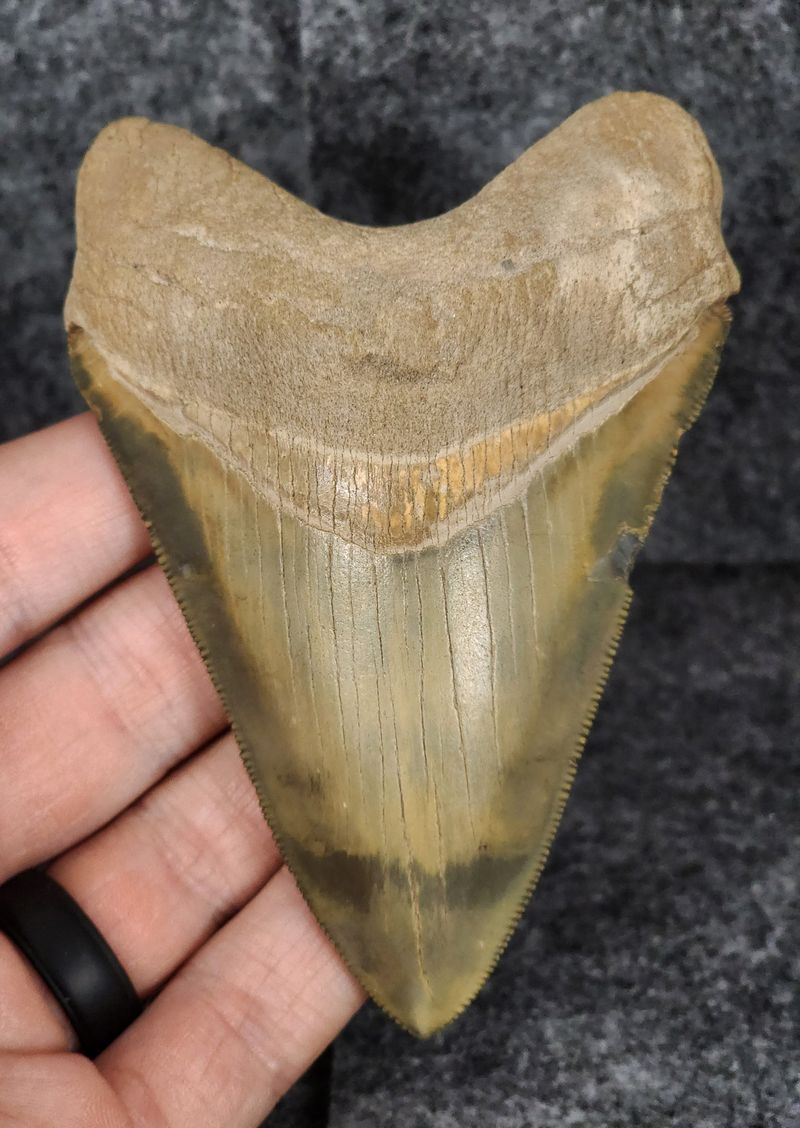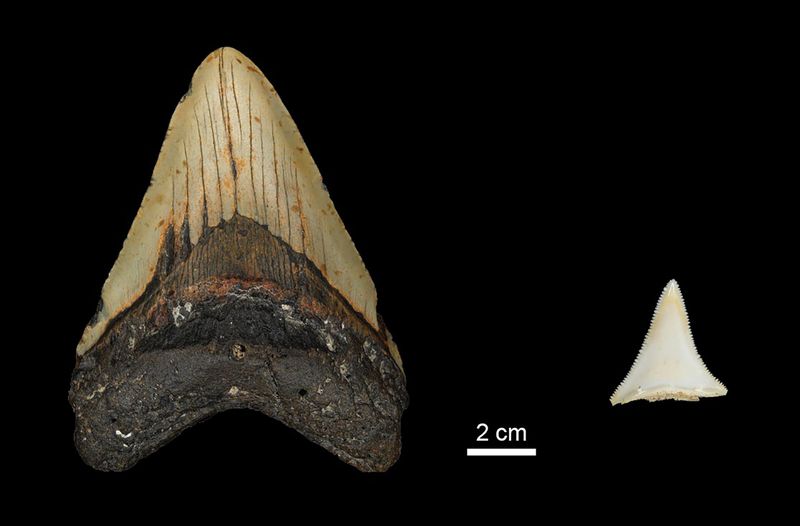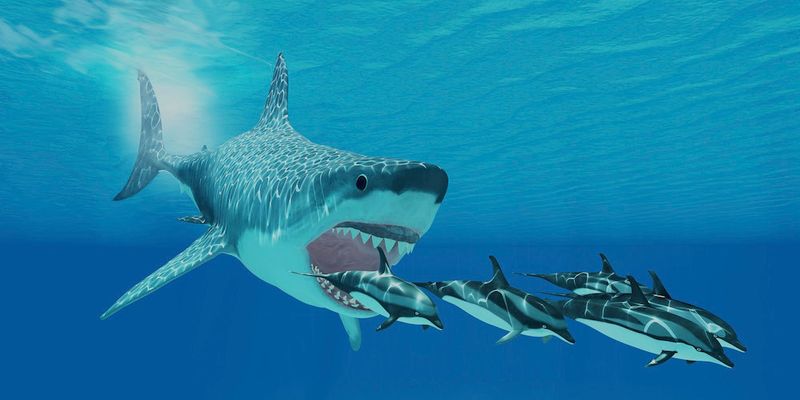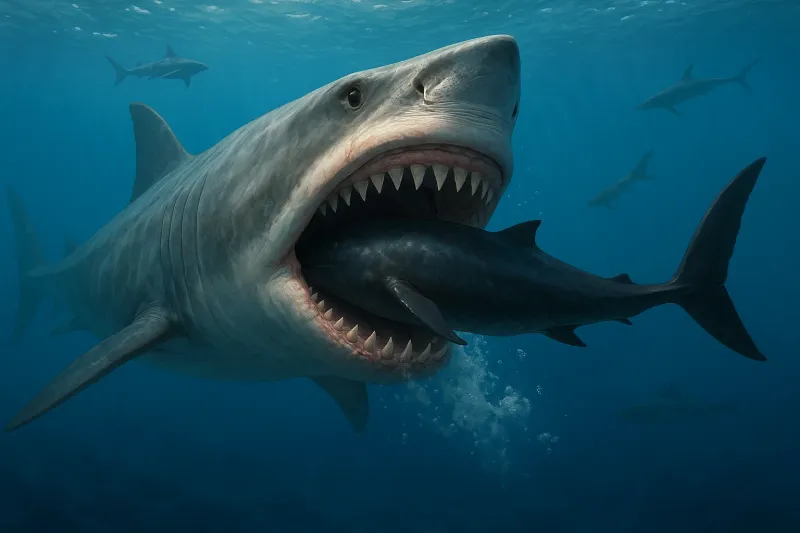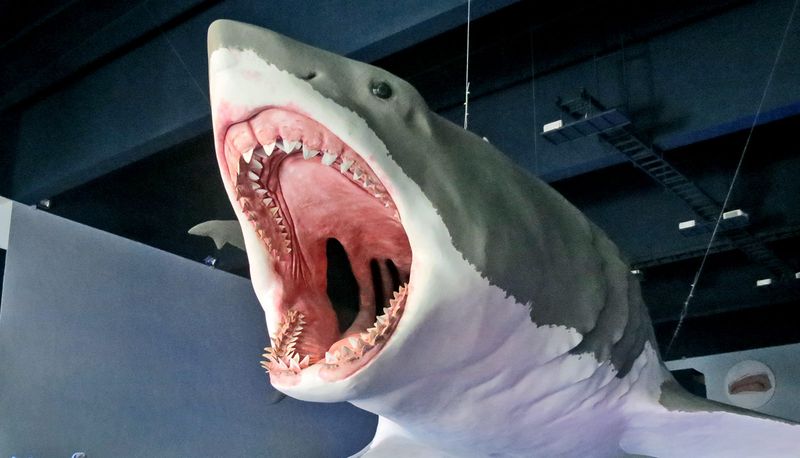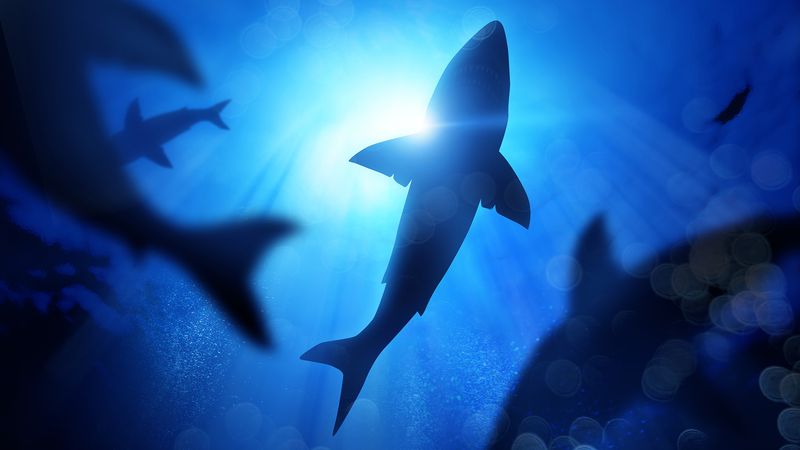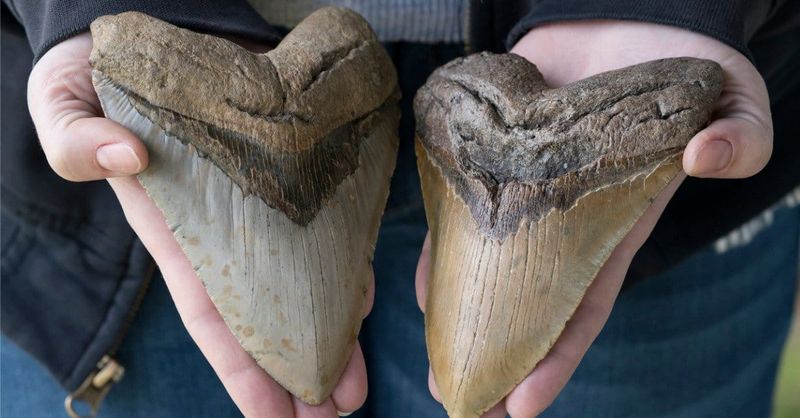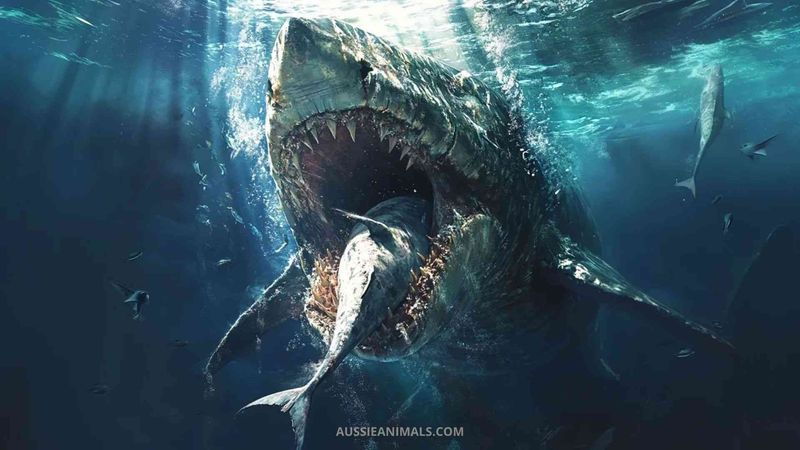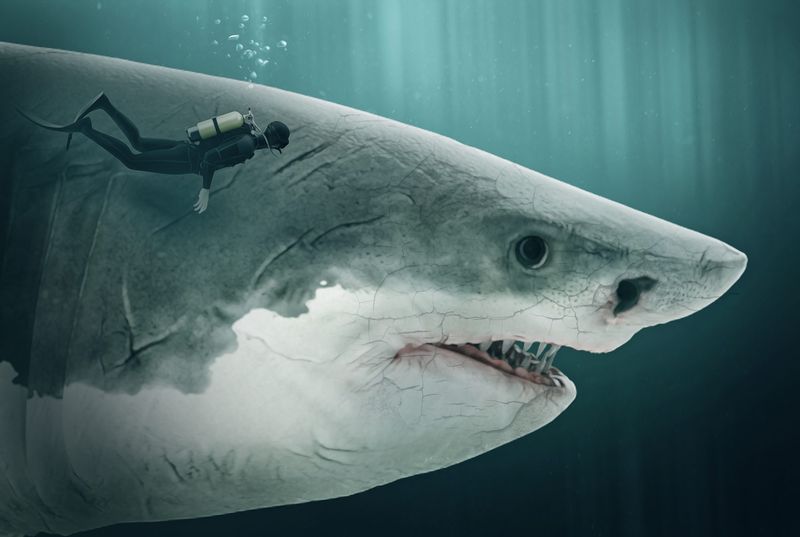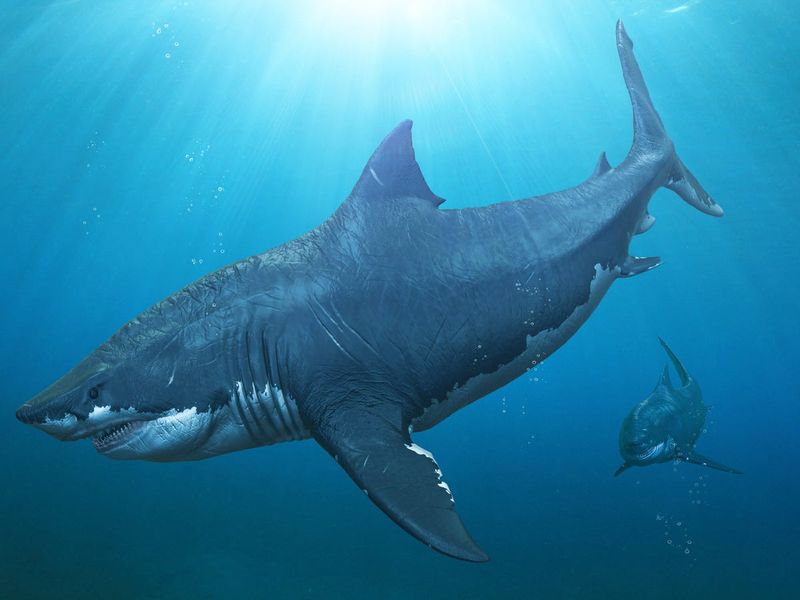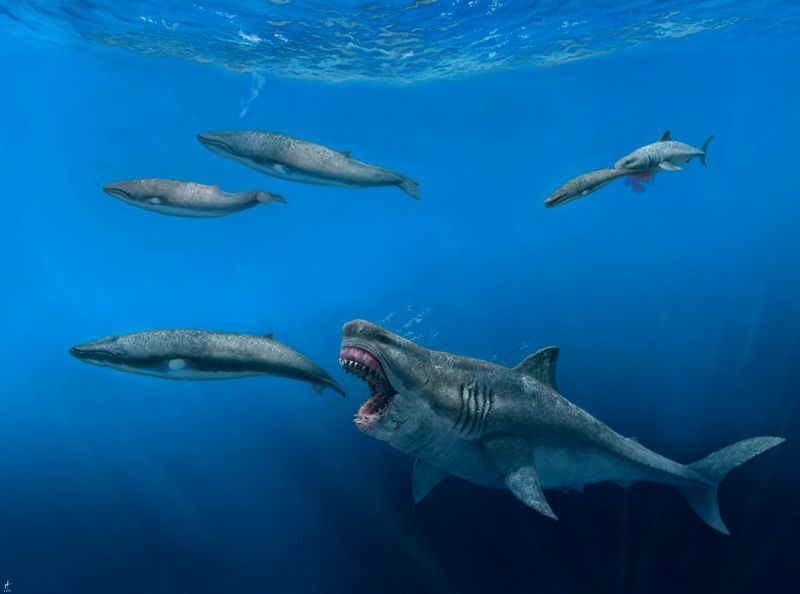The ancient megalodon shark has fascinated scientists and the public for decades. Now, groundbreaking research using zinc isotope analysis on fossilized teeth has revealed surprising new information about what these ocean giants actually ate.
These discoveries are completely changing what we thought we knew about one of history’s most fearsome predators.
1. Ancient Teeth Tell New Stories
The megalodon teeth analyzed by scientists are a staggering 18 million years old! These ancient fossils have survived eons, preserving crucial information about the creature’s feeding habits.
Despite their age, these teeth contain chemical signatures that remain intact, allowing researchers to peek into the prehistoric past with unprecedented clarity. Scientists can extract data that reveals not just what megalodons ate, but how they lived.
Each tooth serves as a time capsule, offering a direct connection to a world where these massive predators ruled the oceans long before humans walked the Earth.
2. Chemical Detective Work
Scientists employed a revolutionary technique using zinc isotopes found in tooth enamel to determine what megalodons ate. This chemical fingerprinting method works because different levels of zinc accumulate depending on an animal’s position in the food chain.
The higher an animal sits on the food chain, the lower its zinc isotope values typically are. No stomach contents needed—just perfectly preserved teeth!
This breakthrough approach allows researchers to analyze prehistoric diets without requiring the nearly impossible discovery of fossilized stomach contents, opening new doors for understanding extinct species.
3. Surprise: They Weren’t Food Snobs
Forget what you’ve seen in movies—megalodons weren’t just whale hunters! The new research reveals they were actually opportunistic feeders, consuming whatever prey was available in their environment.
From massive whales to schools of large fish, these sharks adapted their hunting strategies based on local food sources. This flexibility allowed them to thrive in different marine ecosystems around the world.
Their non-specialized diet challenges the popular image of megalodons as exclusively whale-hunting monsters and paints a picture of a more adaptable predator that could survive changing ocean conditions.
4. Regional Diets Varied Dramatically
Fossil teeth discovered in Passau, Germany shocked scientists with unexpectedly high zinc values. These readings suggest that in this region, megalodons weren’t top-tier predators but instead consumed mid-level prey!
This regional variation shows that megalodons adjusted their hunting strategies based on local food availability. In some areas, they may have targeted smaller fish or marine reptiles instead of large mammals.
The discovery highlights how even the ocean’s most formidable hunters had to adapt to their surroundings, challenging our understanding of prehistoric marine food webs.
5. Massive Appetites Required Constant Feeding
A megalodon’s daily calorie needs were truly staggering—approximately 100,000 kilocalories every single day! This enormous energy requirement meant constant hunting was necessary for survival.
To visualize this appetite, imagine devouring more than 40 whole chickens daily just to maintain your body weight. Their massive size—up to 60 feet long—demanded this incredible energy intake.
Such extreme caloric needs may have ultimately contributed to their extinction, especially if prey populations declined or competition increased. When food resources couldn’t keep up with their appetites, megalodons faced serious survival challenges.
6. Kings of the Ancient Seas
The zinc analysis confirms what scientists long suspected—megalodons truly were apex predators of their time. Their position atop the marine food chain meant virtually nothing hunted them, while they hunted almost everything else.
Adult megalodons had no natural predators. Their massive jaws, powerful bodies, and strategic hunting abilities made them nearly unstoppable forces in prehistoric oceans.
This apex status allowed them to shape entire marine ecosystems through their feeding habits, influencing the evolution and behavior of countless other species that shared their watery domain.
7. Whale Hunting Was Just One Specialty
Contrary to popular belief, megalodons weren’t exclusively whale hunters. The new research reveals a far more diverse menu that included various marine creatures depending on availability and opportunity.
While they certainly could—and did—hunt whales when available, megalodons also consumed sea turtles, smaller sharks, large fish, and possibly even seals or sea lions. Their hunting strategy appears to have been based on efficiency rather than preference.
This dietary flexibility was likely a key survival advantage, allowing megalodons to thrive across different ocean environments and adapt when certain prey species became scarce.
8. Prehistoric Shark Rivalries
Megalodons weren’t the only large predators in ancient seas. Early great white sharks emerged while megalodons still ruled, creating what may have been history’s most intense underwater competition.
The fossil record shows these species overlapped for millions of years. Though smaller than megalodons, great whites were more agile and potentially better adapted to changing ocean conditions.
This competition for food resources might have contributed to megalodon’s eventual extinction. As prey became scarcer due to climate change, the more adaptable great whites may have outcompeted their larger cousins in the struggle for survival.
9. European Megalodon Evidence Surprises Experts
The discovery of megalodon teeth in Germany stunned paleontologists. These findings expanded our understanding of the shark’s range far beyond the warm coastal waters typically associated with megalodon fossils.
Germany’s megalodon teeth indicate these massive predators ventured into cooler European waters, suggesting they may have been more temperature-adaptable than previously thought. This expanded territory would have given them access to different prey species.
Each new fossil location helps scientists piece together the megalodon’s true global impact and adaptation capabilities. The German teeth specifically revealed unique feeding patterns compared to specimens found elsewhere.
10. Food Scarcity Shaped Hunting Strategies
When preferred prey became scarce, megalodons didn’t just go hungry—they adapted! The zinc analysis suggests these sharks adjusted their diets based on regional food availability, sometimes targeting less nutritious prey when necessary.
This adaptation required megalodons to develop different hunting techniques for different prey types. Catching fast-swimming fish demands different skills than ambushing larger, slower marine mammals.
Despite their impressive adaptability, megalodons ultimately couldn’t overcome the perfect storm of environmental changes and competition that led to their extinction. Their massive size became a liability when high-energy prey became increasingly difficult to find.
11. Chemical Time Capsules in Enamel
Megalodon teeth aren’t just impressive fossils—they’re chemical time capsules! Even after 18 million years, these teeth retain trace elements that reveal astonishing details about the shark’s life.
Beyond diet, scientists can determine migration patterns by analyzing oxygen isotopes, which vary based on water temperature and salinity. Growth rings in teeth, similar to tree rings, show seasonal changes and age.
The teeth even preserve evidence of environmental conditions like ocean temperatures and pollution levels from the Miocene epoch. Each tooth tells a complete story of an individual shark’s life history, from juvenile to adult.
12. Victims of Their Own Success
Could megalodons have been too successful for their own good? Their enormous size—while making them formidable predators—created a massive energy demand that ultimately proved unsustainable.
A full-grown megalodon needed constant access to high-calorie prey. When climate shifts altered ocean ecosystems, these giants couldn’t downsize their appetites to match the changing food supply.
Smaller, more efficient predators like early great whites could survive on less food and adapt more quickly to environmental changes. The megalodon’s spectacular evolutionary success paradoxically contained the seeds of its eventual downfall.
13. The Extinction Puzzle Continues
Despite these groundbreaking dietary discoveries, the complete story of megalodon extinction remains elusive. Scientists now believe multiple factors converged around 3.6 million years ago to doom these ocean giants.
Global cooling shrank tropical seas where megalodons thrived. Whale populations migrated to colder waters beyond the megalodon’s comfortable range. Meanwhile, great white sharks and killer whales emerged as efficient competitors.
The new dietary research adds another piece to this puzzle—megalodons weren’t adaptable enough to overcome all these challenges simultaneously. Their specialized hunting equipment and massive energy needs became liabilities in a rapidly changing world.
14. Masters of Adaptation—Until They Weren’t
The zinc analysis reveals megalodons were surprisingly adaptable predators, capable of adjusting their diets based on local food availability. This flexibility allowed them to dominate oceans worldwide for over 20 million years.
Megalodons could switch between hunting strategies—from ambushing whales to pursuing schools of fish—depending on what was available. Different tooth shapes found in various locations suggest regional hunting specializations.
Yet this adaptability had limits. When faced with rapidly cooling oceans, evolving prey that could escape to deeper waters, and new competing predators, even the mighty megalodon couldn’t adapt quickly enough to survive.
15. Modern Science Meets Ancient Predator
The megalodon research demonstrates how cutting-edge technology can reveal new secrets from ancient fossils. Scientists used techniques that weren’t even imaginable a decade ago to analyze these 18-million-year-old teeth!
These same methods are now being applied to study other extinct species and modern marine ecosystems. Understanding how megalodons influenced ancient oceans helps scientists predict how today’s apex predators shape marine environments.
The research also provides insights into how climate change affects top predators. By studying megalodon’s response to ancient climate shifts, we gain valuable perspective on how today’s sharks might respond to our changing oceans.
